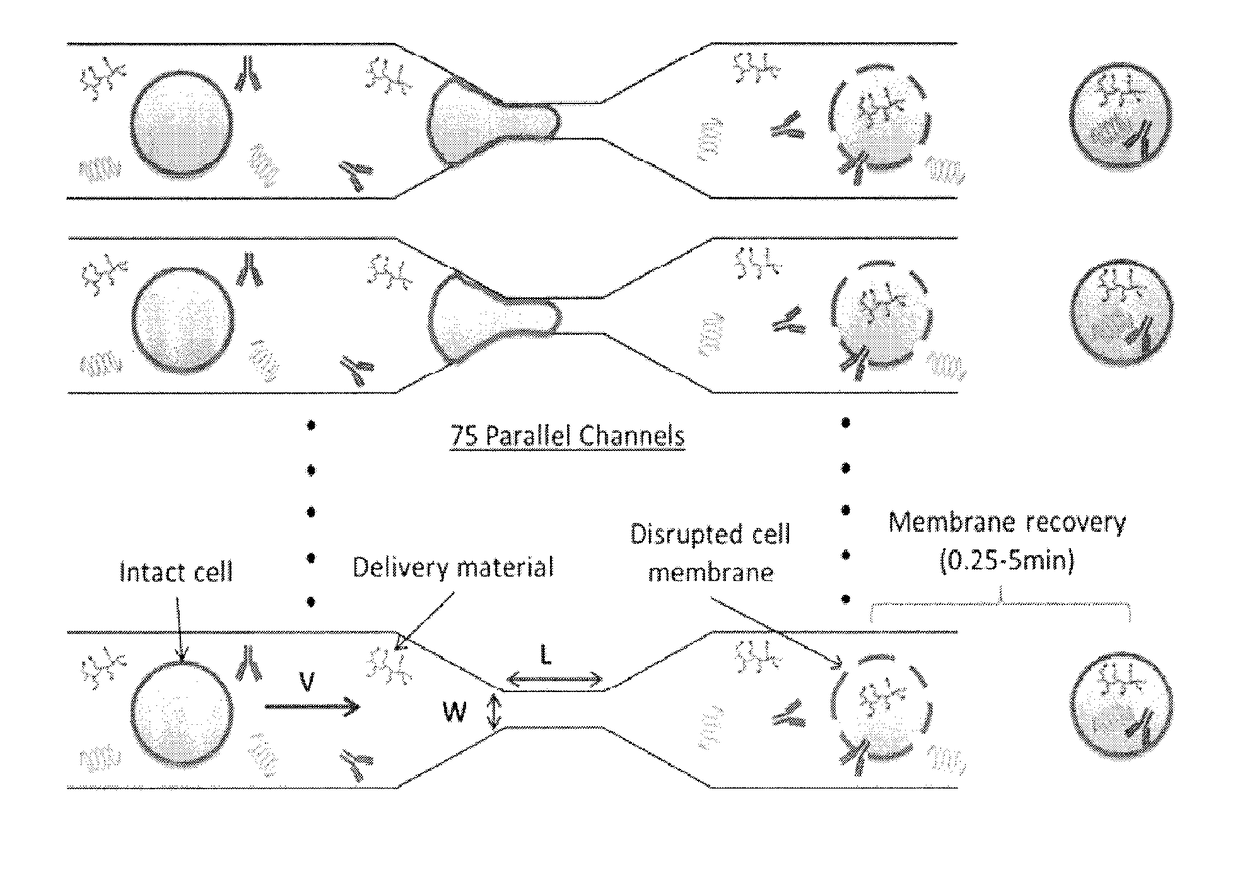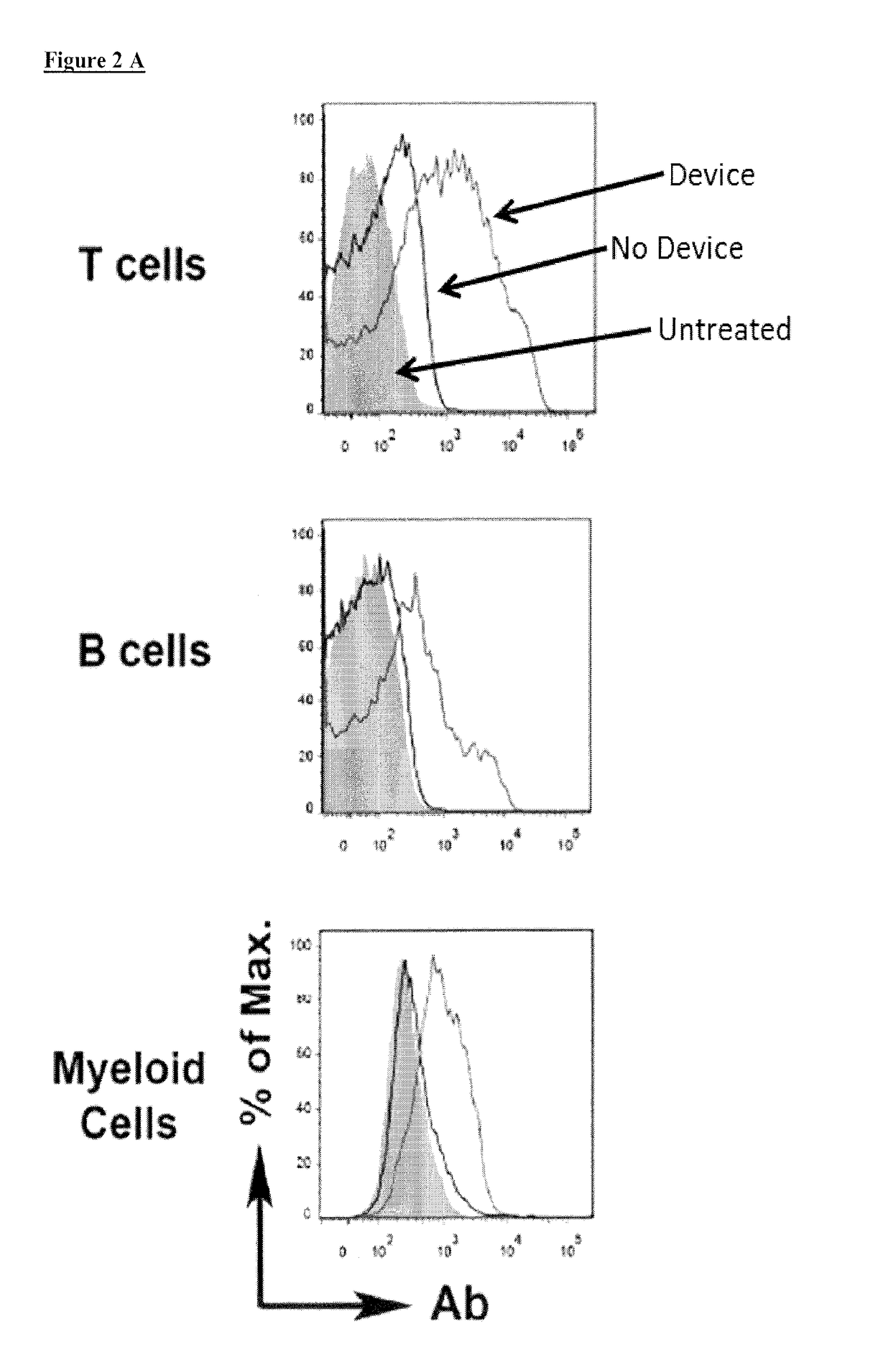Delivery of biomolecules to immune cells
a technology of biomolecules and immune cells, applied in the direction of antibody medical ingredients, immunological disorders, instruments, etc., can solve the problems of inefficiency, inefficiency, and/or requirement of compound introduction, and achieve the effect of eliciting a cytotoxic t cell respons
- Summary
- Abstract
- Description
- Claims
- Application Information
AI Technical Summary
Benefits of technology
Problems solved by technology
Method used
Image
Examples
Embodiment Construction
[0052]A vector-free microfluidic delivery platform (CellSqueeze) is used to deliver macromolecules directly into the cytosol of primary immune cells, e.g., mouse, human, with minimal cytotoxicity. The principle underlying this approach is temporary membrane disruption by rapid mechanical deformation, or squeezing, of the target cell, which permits the uptake by diffusion of macromolecules in the fluid medium and is followed by cell membrane repair (see, e.g., U.S. Patent Publication No. 20140287509, hereby incorporated by reference. Using a library of microfluidic designs, uptake of test compounds such as dextran polymers, antibodies and small interfering RNAs (siRNA) were delivered into primary human and murine T cells, B cells, monocytes / macrophages, and dendritic cells+. The results demonstrate the utility of the platform to deliver a variety of different sizes and types of macromolecules. Efficient delivery of material to different classes of immune cells, which have a large ran...
PUM
| Property | Measurement | Unit |
|---|---|---|
| Fraction | aaaaa | aaaaa |
| Diameter | aaaaa | aaaaa |
| Diameter | aaaaa | aaaaa |
Abstract
Description
Claims
Application Information
 Login to View More
Login to View More - R&D
- Intellectual Property
- Life Sciences
- Materials
- Tech Scout
- Unparalleled Data Quality
- Higher Quality Content
- 60% Fewer Hallucinations
Browse by: Latest US Patents, China's latest patents, Technical Efficacy Thesaurus, Application Domain, Technology Topic, Popular Technical Reports.
© 2025 PatSnap. All rights reserved.Legal|Privacy policy|Modern Slavery Act Transparency Statement|Sitemap|About US| Contact US: help@patsnap.com



